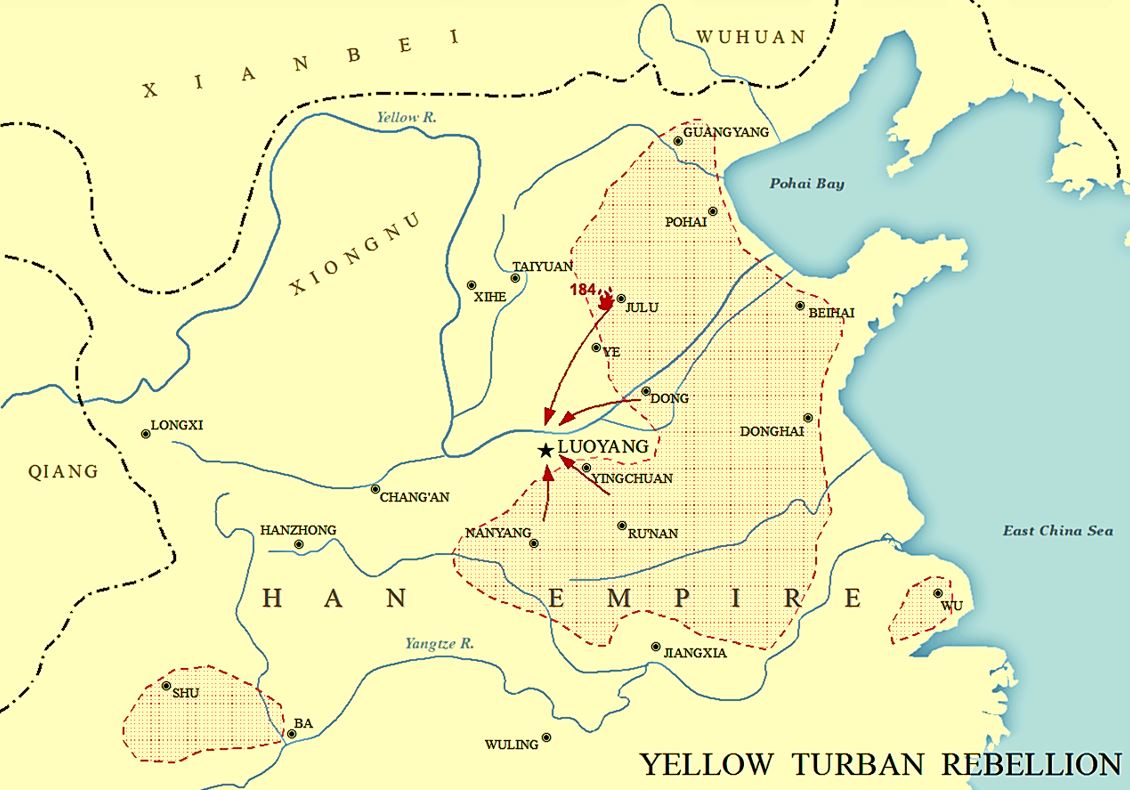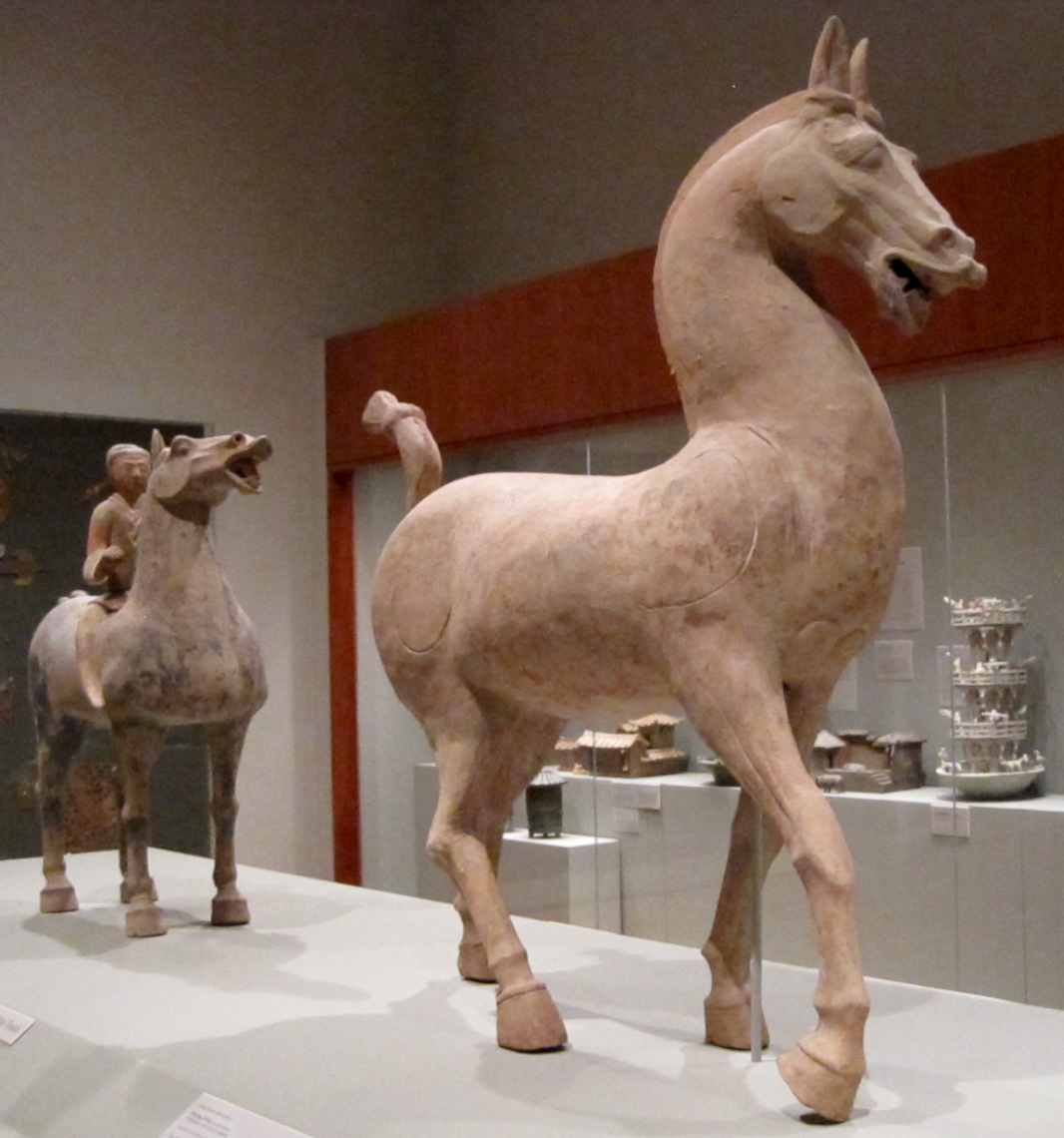|
Cao Cao's Invasion Of Xu Province
Cao Cao's invasion of Xu Province was a punitive invasion launched by the warlord Cao Cao against Tao Qian, the Governor of Xu Province, in the late Eastern Han dynasty. The ''casus belli'' for the invasion was the murder of Cao Cao's father, Cao Song, in Xu Province. Although Tao Qian's culpability was questionable, Cao Cao nonetheless held him responsible. The invasion took place in two separate waves in 193 and 194, during each of which Cao Cao captured a number of towns and engaged in collective punishment of the civilian populace. Background Cao Cao's father Cao Song was living in his hometown Qiao (; present-day Bozhou, Anhui) after retirement until it became a battlefield during the Campaign against Dong Zhuo. So Cao Song along with the rest of his family moved to Langya (; present-day Linyi, Shandong) in Xu Province. By 193, Cao Cao had established a base in Yan Province (covering present-day southwestern Shandong and eastern Henan), and invited his father over to his ... [...More Info...] [...Related Items...] OR: [Wikipedia] [Google] [Baidu] [Amazon] |
End Of The Han Dynasty
The end of the (Eastern) Han dynasty was the period of History of China, Chinese history from 189 to 220 CE, roughly coinciding with the tumultuous reign of the Han dynasty's last ruler, Emperor Xian of Han, Emperor Xian. It was followed by the Three Kingdoms era (220–280 CE). During the end of the Han dynasty, the country was thrown into turmoil by the Yellow Turban Rebellion (184–205). Meanwhile, the Han Empire's institutions were destroyed by the warlord Dong Zhuo and fractured into regional regimes ruled by various warlords, some of whom were nobles and officials of the Han imperial court. The warlord Cao Cao took control of Emperor Xian and his court in 196 and began gradually reunifying the empire. Cao Cao ostensibly operated under Emperor Xian's rule, though in reality the emperor was a hostage. Cao Cao's efforts to reunify China were rebuffed at the Battle of Red Cliffs in 208-209, when his armies were defeated by the allied forces of Sun Quan and Liu Bei. The Han d ... [...More Info...] [...Related Items...] OR: [Wikipedia] [Google] [Baidu] [Amazon] |
Campaign Against Dong Zhuo
The Campaign against Dong Zhuo was a punitive expedition initiated by a coalition of regional officials and warlords against the warlord Dong Zhuo in 190 in the late Eastern Han dynasty. The members of the coalition claimed that Dong had the intention of usurping the throne by holding Emperor Xian of Han, Emperor Xian hostage and by establishing a strong influence in the imperial court. They justified their campaign as to remove Dong from power. The campaign led to the evacuation of the capital Luoyang and the shifting of the imperial court to Chang'an. It was a prelude to the end of the Han dynasty and, subsequently, the Three Kingdoms period. In the 14th-century historical novel ''Romance of the Three Kingdoms'', the campaign is memorable for at least two famous incidents: one is Guan Yu's slaying of Hua Xiong; the other is the three-on-one duel between the three sworn brothers (Liu Bei, Guan Yu, Zhang Fei) and Lü Bu. The two scenes are often reenacted in Chinese opera along ... [...More Info...] [...Related Items...] OR: [Wikipedia] [Google] [Baidu] [Amazon] |
Xuzhou
Xuzhou ( zh, s=徐州), also known as Pengcheng () in ancient times, is a major city in northwestern Jiangsu province, China. The city, with a recorded population of 9,083,790 at the 2020 Chinese census, 2020 census (3,135,660 of which lived in the built-up area made of Quanshan, Gulou, Yunlong and Tongshan urban Districts and Jiawang District not being conurbated), is a national complex transport hub and an important gateway city in East China. Xuzhou is a central city of Huaihai Economic Zone and Xuzhou metropolitan area. Xuzhou is an important node city of the country's Belt and Road Initiative, and an international new energy base. Xuzhou has won titles such as the National City of Civility (全国文明城市) and the United Nations UN-Habitat Scroll of Honour Award, Habitat Scroll of Honour award. The city is designated as List of National Famous Historical and Cultural Cities in China, National Famous Historical and Cultural City since 1986 for its relics, especially the ... [...More Info...] [...Related Items...] OR: [Wikipedia] [Google] [Baidu] [Amazon] |
Wei Zhao (Eastern Wu)
Wei Zhao (204–273), courtesy name Hongsi, was an official, historian, and scholar of the state of Eastern Wu during the Three Kingdoms period of China. He shared the same personal name as Sima Zhao (, an ancestor of the Jin dynasty emperors). In order to avoid naming taboo, the historian Chen Shou changed Wei Zhao's personal name to "Yao ()" when he wrote Wei Zhao's biography in the ''Sanguozhi'' (the authoritative source for the history of the Three Kingdoms period). Life Wei Zhao was appointed as the first Erudite Libationer (博士祭酒; i.e. President) of the precursor to the Imperial Nanking University by the third Wu emperor, Sun Xiu, in 258. He was the chief editor of the ''Book of Wu'', an official history of Wu. While he was compiling the ''Book of Wu'', the fourth Wu emperor Sun Hao attempted to force him to rewrite certain portions of the book, but Wei Zhao refused on the grounds that such amendments would infringe the principle of history. Wei Zhao's insistence o ... [...More Info...] [...Related Items...] OR: [Wikipedia] [Google] [Baidu] [Amazon] |
Eastern Wu
Wu (Chinese language, Chinese: 吳; pinyin: ''Wú''; Middle Chinese *''ŋuo'' < Eastern Han Chinese: ''*ŋuɑ''), known in historiography as Eastern Wu or Sun Wu, was a Dynasties of China, dynastic state of China and one of the three major states that competed for supremacy over China in the Three Kingdoms period. It previously existed from 220 to 222 as a vassal kingdom nominally under Cao Wei, its rival state, but declared complete independence in November 222. It was elevated to an empire in May 229 after its founding ruler, Sun Quan (Emperor Da), declared himself Emperor of China, emperor. The name "Wu" was derived from the place it was based in—the Jiangnan (Yangtze River Delta) region, which was also historically known as "Wu (region), Wu". It was called "Dong Wu" ("Eastern Wu") or "Sun Wu" by historians to distinguish it from other Chinese historical states with similar names in that region, such as the Wu (state), Wu state in the Spring and Autumn period and the Wuyu ... [...More Info...] [...Related Items...] OR: [Wikipedia] [Google] [Baidu] [Amazon] |
Wei Zhao (Three Kingdoms)
Wei Zhao (204–273), courtesy name Hongsi, was an official, historian, and scholar of the state of Eastern Wu during the Three Kingdoms period of China. He shared the same personal name as Sima Zhao (, an ancestor of the Jin dynasty emperors). In order to avoid naming taboo, the historian Chen Shou changed Wei Zhao's personal name to "Yao ()" when he wrote Wei Zhao's biography in the ''Sanguozhi'' (the authoritative source for the history of the Three Kingdoms period). Life Wei Zhao was appointed as the first Erudite Libationer (博士祭酒; i.e. President) of the precursor to the Imperial Nanking University by the third Wu emperor, Sun Xiu, in 258. He was the chief editor of the ''Book of Wu'', an official history of Wu. While he was compiling the ''Book of Wu'', the fourth Wu emperor Sun Hao attempted to force him to rewrite certain portions of the book, but Wei Zhao refused on the grounds that such amendments would infringe the principle of history. Wei Zhao's insistence o ... [...More Info...] [...Related Items...] OR: [Wikipedia] [Google] [Baidu] [Amazon] |
Zizhi Tongjian
The ''Zizhi Tongjian'' (1084) is a chronicle published during the Northern Song dynasty (960–1127) that provides a record of Chinese history from 403 BC to 959 AD, covering 16 dynasties and spanning almost 1400 years. The main text is arranged into 294 scrolls (), each equivalent to a chapter—totaling around 3 million Chinese characters. In 1065, Emperor Yingzong of Song commissioned his official, Sima Guang (1019–1086), to lead a project to compile a Universal history (genre), universal history of China, and granted him funding and the authority to appoint his own staff. His team took 19 years to complete the work and in 1084 it was presented to Emperor Yingzong's successor Emperor Shenzong of Song. It was well-received and has proved to be immensely influential among both scholars and the general public. Endymion Wilkinson regards it as reference quality: "It had an enormous influence on later Chinese historical writing, either directly or through its many a ... [...More Info...] [...Related Items...] OR: [Wikipedia] [Google] [Baidu] [Amazon] |
Book Of The Later Han
The ''Book of the Later Han'', also known as the ''History of the Later Han'' and by its Chinese name ''Hou Hanshu'' (), is one of the Twenty-Four Histories and covers the history of the Han dynasty from 6 to 189 CE, a period known as the Later or Eastern Han. The book was compiled by Fan Ye and others in the 5th century during the Liu Song dynasty, using a number of earlier histories and documents as sources. Background In 23 CE, Han dynasty official Wang Mang was overthrown by a peasants' revolt known as the Red Eyebrows. His fall separates the Early (or Western) Han dynasty from the Later (or Eastern) Han dynasty. As an orthodox history, the book is unusual in being completed over two hundred years after the fall of the dynasty. Fan Ye's primary source was the '' Dongguan Hanji'' (東觀漢記; "Han Records of the Eastern Lodge"), which was written during the Han dynasty itself. Contents References Citations Sources ; General * Chavannes, Édouard (1906 ... [...More Info...] [...Related Items...] OR: [Wikipedia] [Google] [Baidu] [Amazon] |
Mount Tai
Mount Tai () is a mountain of historical and cultural significance located north of the city of Tai'an. It is the highest point in Shandong province, China. The tallest peak is the ''Jade Emperor Peak'' (), which is commonly reported as being tall. Mount Tai is known as the eastern mountain of the Sacred Mountains of China. It is associated with sunrise, birth, and renewal, and is often regarded the foremost of the five. Mount Tai has been a place of worship for at least 3,000 years and served as one of the most important ceremonial centers of China during large portions of this period. Because of its sacred importance and dramatic landscape, it was made a UNESCO World Heritage Site in 1987. It meets 7 of the 10 evaluation standards for World Heritage sites, and is listed as a World Heritage site that meets the most of the standards, along with the Tasmanian Wilderness World Heritage Area in Australia. An earthquake or thunderstorm occurred around Mount Tai in 1831 BC or 1652 ... [...More Info...] [...Related Items...] OR: [Wikipedia] [Google] [Baidu] [Amazon] |
Henan
Henan; alternatively Honan is a province in Central China. Henan is home to many heritage sites, including Yinxu, the ruins of the final capital of the Shang dynasty () and the Shaolin Temple. Four of the historical capitals of China, Luoyang, Anyang, Kaifeng and Zhengzhou, are in Henan. While the province's name means 'south of the river', approximately a quarter of the province lies north of the Yellow River. With an area of , Henan covers a large part of the fertile and densely populated North China Plain. Its neighboring provinces are Shaanxi, Shanxi, Hebei, Shandong, Anhui, and Hubei. Henan is China's third-most populous province and the most populous among inland provinces, with a population of over 99 million as of 2020. It is also the world's seventh-most populous administrative division; if it were a country by itself, Henan would be the 17th-most populous in the world, behind Egypt and Vietnam. People from Henan often suffer from regional discrimination ... [...More Info...] [...Related Items...] OR: [Wikipedia] [Google] [Baidu] [Amazon] |






